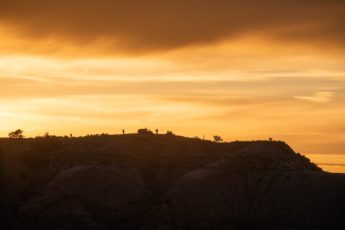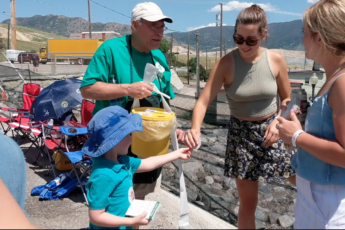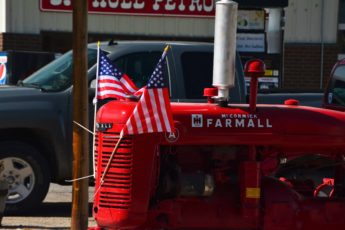Take a trip back in time to see what secrets lie underground in Havre
On June 14, 1904, a fire broke out in Havre, and four blocks burned to the ground. Stores, businesses, offices — everything was gone. With much of the town decimated, the surrounding ranching community and the economy of the railroad was vulnerable. After all, this was long before the days when we could just drive down to Great Falls to get supplies at Costco or Target.
Rather than abandon their town or put a Band-Aid on their gaping wound, folks came together and found a long-term solution. People didn’t want a quick-fix that would just burn down again. So they opened a brickyard nearby, and slowly rebuilt their town.
In the meantime, Havre’s bustling downtown economy moved beneath the streets.
You can let your imagination go wild, picturing what it would be like to buy groceries, drink some whiskey, or get your laundry done underground. Luckily, we don’t have to rely solely on our imagination. Havre Beneath the Streets, Inc. offers historic tours through some of the tunnels and rooms that were Havre’s “Main Street” 100 years ago.
“People don’t realize what’s really down there till they get down there,” said Christy Owens, the office manager for Havre Beneath the Streets.
If you’re looking for a good time to check out this historical attraction, Saturday June 2 is Havre’s Living History Day. Live actors will be walking amongst the offices, shops, and stores in Havre Beneath the Streets, painting a clear picture of what life would’ve been like underground in the early 1900s.
There’s a replica of a bakery, a meat market, and a dentist office. There’s the remains of an old saloon, a bootlegger’s office, and a brothel. There’s a funeral parlor, a pharmacy, a blacksmith shop. There’s even a replica of a Chinese laundry and an opium den.
Many of the items on display were donated by local folks, which makes Havre Beneath the Streets very personal for a lot of people. The tour guide can probably tell you whose uncle donated those blacksmith tongs or which farmhouse those chairs came from. For people on the Hi-Line, their family history is in that museum.
But taking a walk through those tunnels and rooms can strike a chord in all Montanans, not just folks from the Hi-Line. It speaks to the resilience and creativity of a community, and the resourcefulness that our state was built upon. Those are the same qualities we rely on today. It’s that determination and love-of-place that allowed the folks in Seeley Lake, Jordan, or modern-day Havre to come together and rebuild their communities after the recent floods and fires.
For out-of-staters passing through on their way to Glacier, Havre Beneath the Streets is a must-see. Located on the railroad halfway between Seattle and the Twin Cities, Havre played a crucial role in western expansion and the American economy, which makes this town a part of every American’s history. The tour is run out of the local railroad museum, which houses memorabilia from around the country.
“It’s amazing. People meet here from all over the world,” Owens said. “It’s kind of a little gem.”
Folks from all around the world have visited Havre Beneath the Streets (top left). The Frank DeRosa Railroad Museum has items from across the United States on display (top right). The model train set-up at the Frank DeRosa Railroad Museum (bottom).
“It’s something unique that no one else has,” said Jody Olson of the Havre Chamber of Commerce. People can come to see Havre Beneath the Streets, and stay for all the other amazing things Havre has to offer, she said.
As the mantra on the Hi-Line goes, Havre has it. And as you’ll see from Havre Beneath the Streets, Havre had it, too. And if folks on the Hi-Line have anything to say about it, their town will keep on having it for years to come.
-Amanda Garant
Got something to say to Prairie Populist? Send news tips, story ideas and comments to [email protected]. If you have something to submit, or an idea for a story you’d like to write for us, check out our Submission Guidelines here.



